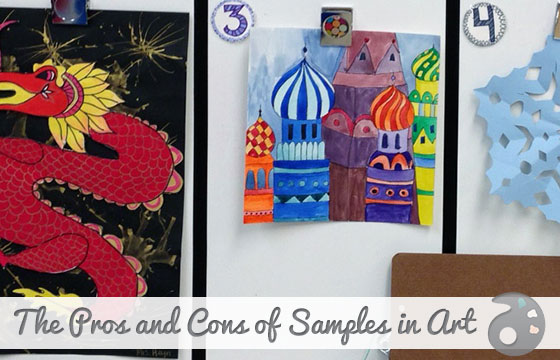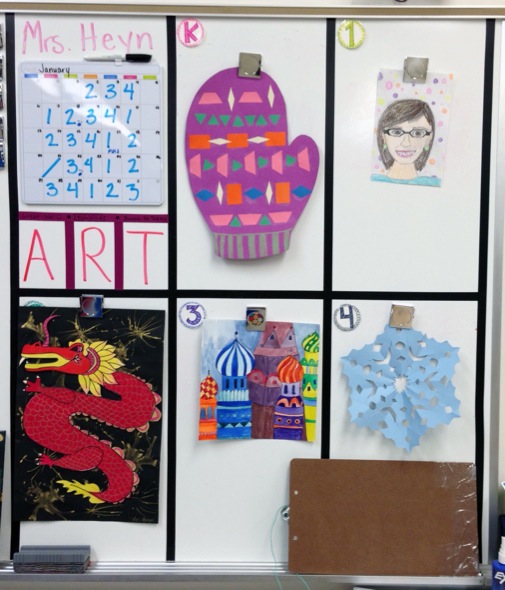Today I’d love to chat about perhaps one of the most controversial topics in art education. The teacher sample.

Before I tell you which side of the fence I fall on, let’s dig a little deeper into the heart of the issue. Proponents of teacher samples believe that it is important for students to see a finished example so that they have a big picture idea of where the project is headed. They view the sample as a visual resource for students. Teachers that object to samples believe that it stifles students’ creativity. All of the student work ends up looking like the teacher’s. Opponents of teacher samples also feel that a sample done by a teacher provides an unrealistic standard to live up to, causing frustration for students that can’t make their work look “right.”
With all of the good reasons for NOT providing a teacher sample, you may be surprised to find that I fall into the other camp. I like providing a teacher sample. Here is my reasoning.
I feel like my teacher sample serves a few important purposes:
1. Making a teacher sample allows me to work out any kinks in the lesson before I begin it with students. It’s difficult to teach something you haven’t tried yourself.
2. I mentioned the second reason I like using a teacher sample above; a finished sample lets students see the big picture before they begin. I feel like this is especially important when students are starting a project that will last for several weeks.
3. I believe that it is important for students to see me not only as a teacher but also as an artist. On my whiteboard, I have a space for each grade level where I hang my teacher samples for all current lessons. When students enter the room, they can quickly glance at the board to see what we are working on that day. They also love to see and ask about what other grade levels are working on, which makes them excited about projects they will get to do as they get older.

One final reason that I like to use teacher samples is that it has brought about some great discussions dealing with creativity and ability with my students. Since I often present students with historical and contemporary artwork during lessons, they are now used to viewing artwork as a resource rather than as something to copy. That is true whether they are looking at a Picasso, a teacher sample, or an example of another students’ work. In addition, the question, “Mrs. Heyn, how are you so good at art?” opens up a great discussion about dedication and practice.
So, I’d love to know. Which side of the fence do you fall on?
Teacher sample or no teacher sample? Let’s talk!
Magazine articles and podcasts are opinions of professional education contributors and do not necessarily represent the position of the Art of Education University (AOEU) or its academic offerings. Contributors use terms in the way they are most often talked about in the scope of their educational experiences.




